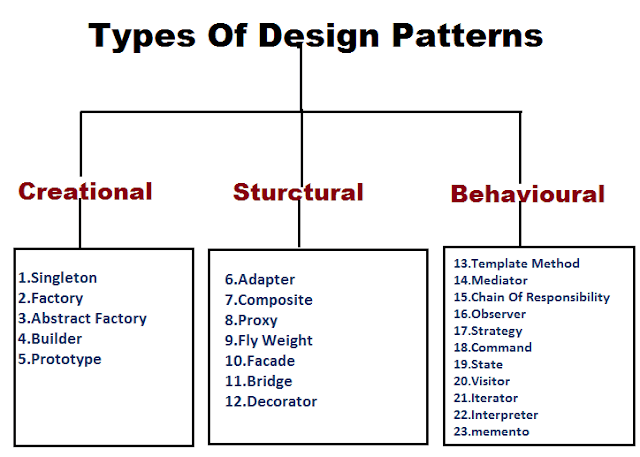Design patterns are a set of best practices and solutions to common software development problems. They provide a way for developers to solve recurring problems in a consistent and efficient manner. One of the most widely used design patterns is the Factory pattern, which provides a way to create objects without specifying the exact class of object that will be created. However, there are other patterns that can also be used for object creation, such as the Builder and Prototype patterns. This article will provide a detailed explanation of how the Builder and Prototype design pattern can be used to replace the Factory pattern and when it’s appropriate to do so.
Alright, fellow code wranglers, let’s dive into the wonderful world of Design Patterns! Now, I know what you’re thinking – “Oh great, another dry, technical topic that’ll put me to sleep faster than a lullaby.” But hang on to your keyboards, because understanding design patterns is like unlocking a secret level in the game of coding.
I remember when I first stumbled upon design patterns. I was knee-deep in a project, trying to wrangle a particularly unruly piece of code into submission. My senior developer took one look at my spaghetti mess and said, “Looks like you need a Factory pattern.” I nodded sagely, pretending I knew what he was talking about, and then spent the next hour frantically Googling “What the heck is a Factory pattern?”
Fast forward a few years, and now I’m the one dropping design pattern knowledge bombs. Trust me, once you get the hang of these bad boys, you’ll feel like a coding superhero. So, grab your cape (or your favorite debugging blanket), and let’s dive into the exciting world of Factory, Builder, and Prototype patterns. Who knows? By the end of this article, you might just be the one saying, “Looks like you need a Factory pattern!”

The Factory Pattern
The Factory pattern is a creational design pattern that provides a way to create objects without specifying the exact class of object that will be created. Factory pattern uses a factory method, which is a method that creates objects, to create objects of a superclass. The factory method is defined in an interface and implemented by concrete classes. This pattern allows the creation of objects to be encapsulated and makes the code more flexible, as the class of objects that is created can be changed without affecting the code that uses them.
An example of when to use the Factory pattern is when creating a game with different levels. The game has a LevelFactory that creates different levels based on the level number passed in. The LevelFactory has a createLevel() method that takes in an integer level number and returns an object of the corresponding level class.
The Builder Pattern
The Builder pattern is a creational design pattern that separates the construction of an object from its representation. Builder pattern uses a builder class, which is a separate class that is responsible for creating an object, to create an object. The builder class has methods for setting the properties of the object and a method for returning the object. This pattern allows the creation of complex objects to be encapsulated and makes the code more flexible, as the class of objects that is created can be changed without affecting the code that uses them.
An example of when to use the Builder pattern is when creating a car. The car class has many properties such as color, engine type, and transmission type. Instead of creating a large constructor for the car class, the car class has a builder class that sets the properties of the car and returns the car object.
The Prototype Pattern
The Prototype pattern is a creational design pattern that allows objects to be created by copying existing objects. Prototype pattern uses a prototype class, which is a class that has a method for creating a copy of the object. This pattern allows the creation of complex objects to be encapsulated and makes the code more flexible, as the class of objects that is created can be changed without affecting the code that uses them.
An example of when to use the Prototype pattern is when creating a character in a game. The character class has many properties such as name, level, and equipment. Instead of creating a new character object every time a character is needed, a prototype character object is created and copies are made of the prototype object.
How Builder and Prototype can replace Factory
The Builder and Prototype patterns can be used to replace the Factory pattern in certain situations. Both patterns provide a way to create complex objects without specifying the exact class of object that will be created. The Builder pattern is useful when there are many properties that need to be set for an object and the Prototype pattern is useful when many copies of an object need to be created.
In situations where the objects being created have many properties, the Builder pattern can be used to encapsulate the creation of the objects and make the codemore flexible. The Builder pattern allows the developer to set the properties of the object in a step-by-step manner, making the code more readable and easy to understand.
On the other hand, the Prototype pattern is useful when many copies of an object need to be created. Instead of creating a new object every time, the Prototype pattern allows the developer to create a prototype object and make copies of it. This can greatly improve performance and reduce the amount of code needed to create multiple objects.
It’s also worth noting that both the Builder and Prototype patterns can be used in conjunction with the Factory pattern. For example, a Factory pattern can be used to create a prototype object and the Prototype pattern can be used to make copies of that object. Similarly, a Factory pattern can be used to create a builder object and the Builder pattern can be used to set the properties of that object.
Now, let’s get real for a second. When I first started playing around with these design patterns, I felt like a kid in a candy store. I wanted to use ALL of them, ALL the time. Factory here, Builder there, sprinkle some Prototype for good measure… and before I knew it, my codebase looked like a design pattern textbook exploded all over it.
Learn from my mistakes, folks. The key to effectively using design patterns is knowing when to use them – and more importantly, when not to. It’s like seasoning in cooking: a little bit enhances the flavor, but too much ruins the dish.
Here are a few tips I’ve picked up along the way:
- Start simple: Don’t try to force a complex pattern where a simple solution would do. Sometimes, good old-fashioned object-oriented programming is all you need.
- Understand the problem first: Before reaching for a design pattern, make sure you fully understand the problem you’re trying to solve. Patterns are tools, not solutions in themselves.
- Consider maintainability: Will other developers (or future you) be able to easily understand and modify the code? Sometimes, a slightly less elegant but more straightforward approach is better in the long run.
- Mix and match: As we’ve seen, patterns like Factory, Builder, and Prototype can work together. Don’t be afraid to combine patterns if it makes sense for your project.
- Communicate with your team: If you’re introducing a new pattern, make sure your team is on board. A pattern that only one person understands can quickly become a maintenance nightmare.
Remember, the goal of using design patterns is to make your code more maintainable, scalable, and easier to understand – not to show off how many patterns you know. Use them wisely, and they’ll be your best friends in the coding trenches.
Examples in Action
- In a game where the player can customize their character, the Builder pattern can be used to create the character object. The builder class sets the properties of the character such as name, level, and equipment in a step-by-step manner, making it easy for the player to customize their character.
- In a large-scale project, the Prototype pattern can be used to improve performance. Instead of creating a new object every time one is needed, a prototype object can be created and copies of it can be made as needed.
FAQ
Q: How can Builder and Prototype patterns replace the Factory pattern? A: Both patterns provide a way to create complex objects without specifying the exact class of object that will be created. The Builder pattern is useful when there are many properties that need to be set for an object and the Prototype pattern is useful when many copies of an object need to be created.
Q: When should I use the Builder pattern? A: The Builder pattern should be used when there are many properties that need to be set for an object and the creation of the object needs to be encapsulated.
Q: When should I use the Prototype pattern? A: The Prototype pattern should be used when many copies of an object need to be created and the creation of the object needs to be encapsulated.
Q: Can the Builder and Prototype patterns be used together with the Factory pattern? A: Yes, the Builder and Prototype patterns can be used in conjunction with the Factory pattern.
Conclusion
The Factory pattern is a widely used design pattern for object creation, but it’s not the only option. The Builder and Prototype patterns can also be used to create objects and encapsulate the creation of complex objects. Both patterns have their own strengths and are appropriate for different use cases. The Builder pattern is useful when there are many properties that need to be set for an object and the Prototype pattern is useful when many copies of an object need to be created. Understanding how to use these patterns and when to use them is an essential skill for any software developer. It’s important to choose the right pattern for the situation and use them correctly to avoid making the code more complex and harder to maintain.
Whew! We’ve covered a lot of ground here, haven’t we? From the trusty Factory pattern to the flexible Builder and the efficient Prototype. But you know what? This is just the tip of the design pattern iceberg.
As you continue your coding journey, you’ll discover that design patterns are like tools in a master craftsman’s workshop. The more you use them, the more you’ll start to see opportunities to apply them in your code. And trust me, there’s nothing quite like that “aha!” moment when you realize a pattern fits perfectly into a problem you’re solving.
So, what’s your next step? Well, I’ve got a challenge for you. Pick one of the patterns we’ve discussed today – maybe the Builder pattern catches your eye, or perhaps you’re itching to try out Prototype. Then, try to implement it in a small project. It doesn’t have to be anything fancy – even a simple console application will do.
And hey, why keep all the fun to yourself? Share your experiences in the comments below. Did you have any “aha!” moments? Any frustrations? Any cool ways you adapted a pattern to fit your specific needs? Let’s learn from each other!
Remember, every coding master was once a beginner. So don’t get discouraged if it feels tough at first. Keep coding, keep experimenting, and before you know it, you’ll be slinging design patterns like a pro.
Happy coding, and may your patterns always be elegant and your bugs be few!
For more post like this; you may also follow this profile – https://dev.to/asifbuetcse

